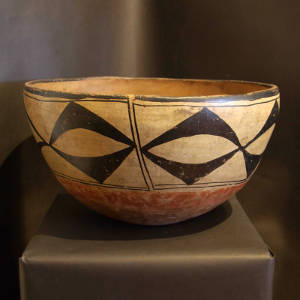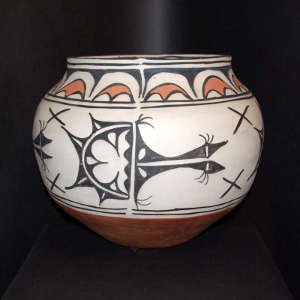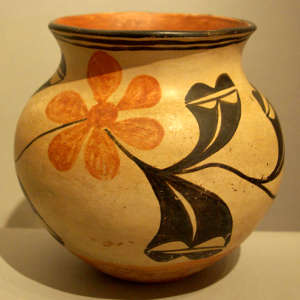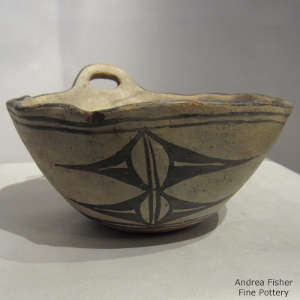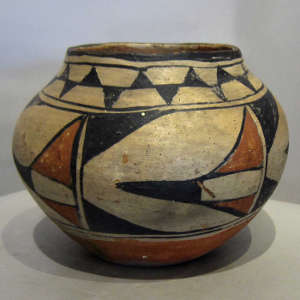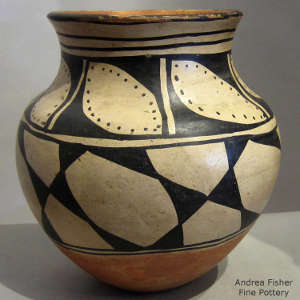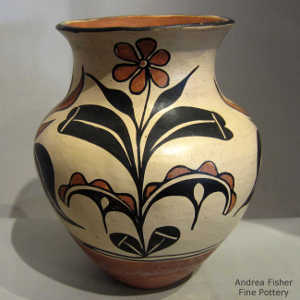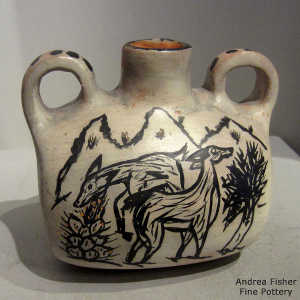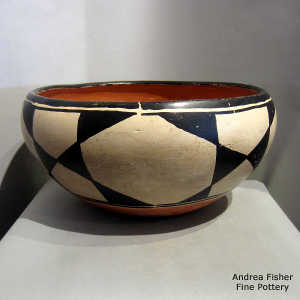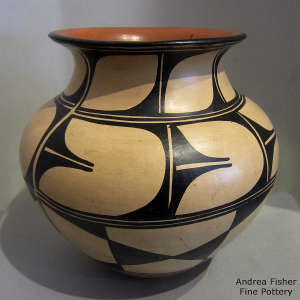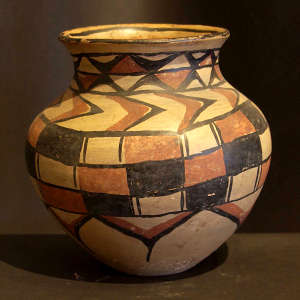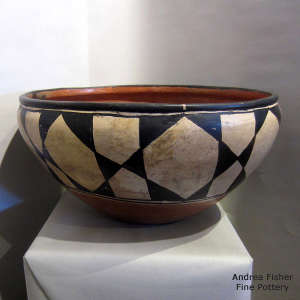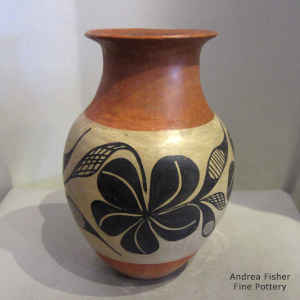Santo Domingo Pueblo
- Kewa
- Language: Eastern Keres
- Size: 81,000 acres
- Population: 2,500
The people of Santo Domingo Pueblo have been in the general area of the Pajarito Plateau since the late 1200s CE. Back then they were a mixed group of Keresan-speaking migrants from the Four Corners area looking for a safer and better place to live. Many of them were in Frijoles Canyon between about 1300 and 1500 CE. That's the date archaeologists have put on the cliff dwellings and on Tyuonyi pueblo in the floor of the canyon. A very bad drought in the 1400s forced many people out of the area and down to the Rio Grande.
Once at the Rio Grande, they couldn't go north: that's where the Tewa were agregating. To the south there was some space before they came to the Tiwa pueblos in the Middle Rio Grande. As they went downstream, those that went up to the edges of the Tiwa area sorted out into the San Felipe tribe. Their first pueblos were mostly built on the western side of the Rio Grande, well away from the Tiwa pueblos east of the river and a bit further south in the valley.
Others at the Rio Grande chose not to cross the river and stayed north of the San Felipe people. They became the Cochiti tribe. Those who crossed the river to the farmlands on the east side became the Santo Domingo tribe. Because they were all living next to farmland that was hardly defensible, they also built much more defensible masonry pueblos atop some of the mesas that line the western side of the Rio Grande Valley.
Living next to the farmland along the Rio Grande turned out to be risky at times. Previous villages were destroyed by floods in 1606, 1700 and 1855, causing the residents to move to higher ground and rebuild. The present village came together organically around 1866. The present mission church was built in 1899.
The Santo Domingo people were participants in the Pueblo Revolt of 1680. In 1681, Antonio Otermin (Spanish Governor of the Province) led a punitive mission against Santo Domingo, only to arrive and find the pueblo deserted: the people had moved to the mountain stronghold at Cieneguilla with their Cochiti Pueblo neighbors. Otermin had the village burned before moving on.
When Don Diego de Vargas arrived in the area in 1692 he attacked Cieneguilla and burned it, too. Many of the survivors fled west and south to Acoma, Zuni and Hopi. Most of those only stayed a short while before moving to Laguna when it was being established. Eventually, though, most returned to the present area of Santo Domingo and started over again.
When the Spanish returned after the 1680 Revolt, they cut the people off from their source of lead for making lead glazed decorations on their pottery. That was the one thing they had for trade purposes. By the late 1690s, the Southern Tewa people living in the Santa Fe River Basin area (over the ridge from the Galisteo Basin) were headed back north: life had gotten too hard, the times were too dry. The Galisteo Basin, populated by descendants of Santo Domingo, proved to be too dry and rainfall too fickle. Add in the damage from Spanish-borne diseases and it was time. Those in the Santa Fe Basin headed north and then west, ending up a few years later at Hano on First Mesa in Tusayan. Those more south in the Galisteo River drainage went downstream along the creek and were taken in by their Santo Domingo cousins.
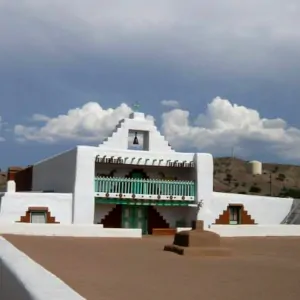
Santo Domingo Mission Church
Pottery History
Kewa Polychrome seems to have developed in the 1880s and has been a mainstay of pottery design in the pueblo ever since. The style features black geometric designs in vertical panels painted on a cream-colored slip body with a solid red slip underneath.
The Aguilar family started a "reverse painting" trend around 1910 by covering the cream-colored slip almost entirely with black and red. Today's polychrome designs feature animals, leaves and flowers. It is strictly forbidden to paint human forms or sacred symbols on any pottery that isn't meant to be ceremonial pottery.
There were very few potters in the pueblo in the early 1900s as most people were making jewelry. Santana Melchor, taught the art of pottery making by her mother, began making pieces in the 1920s and by 1945 she was the most prominent potter at Santo Domingo. She also taught the traditional art to her children and grandchildren. However, it seems the recent revival in Santo Domingo pottery began in the 1970s when Robert Tenorio, originally of a jewelry-making lineage, learned the basics of pottery making from his aunt, Andrea Ortiz. When he went to the Institute for American Indian Arts, he was enrolled in silversmithing but spent more time in the ceramics classes. When he finished school, he became a full-time potter. Over the years since, he has revived many of the traditional Kewa styles and passed his art on to more of his family. He has also inspired others within the pueblo to learn to make Santo Domingo pottery again.
